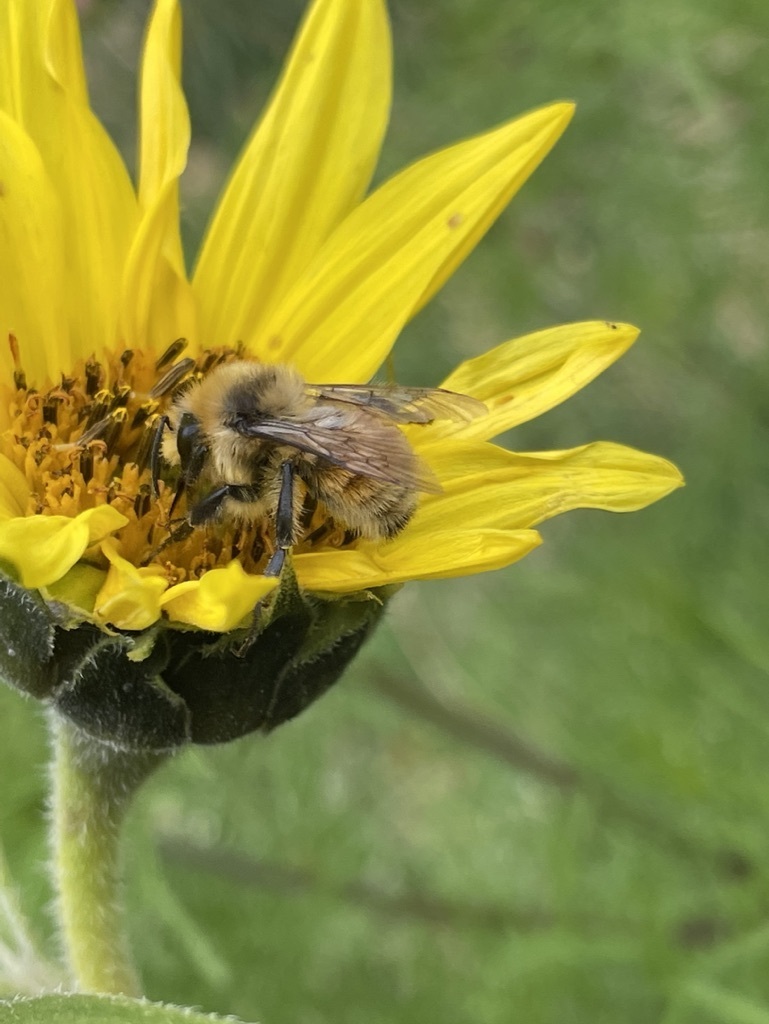Pollinator of the Month: Texas Striped Sweat Bee (Agapostemon texanus)
Texas striped sweat bee is scientifically referred to as Agapostemon texanus. The genus name Agapostemon means stamen loving, which has Greek origins and refers to their need to forage pollen. The species name texanus refers to Texas, as this type of specimen has been found there. They belong within the sweat bee family ( Halictidae). This family consists of small, non-aggressive bees with short tongues. Sweat bees are also attracted to sweat, hence their name, which allows them to obtain minerals and moisture.
Texas striped sweat bee is easily recognizable by its green metallic coloration. This is a structural colour, which is caused by light reflecting based off of structure rather than producing pigments. The females have an entire body that is brilliant blue-green, while the males have a head and thorax that are brilliant blue-green and an abdomen that is brownish black with yellow bands. The males are also smaller than the females, measuring 9-10 mm in length compared to 11 mm for the females. Due to the short tongues of the Texas striped sweat bee they have a more limited ability to access nectar from deep flowers. However, it is considered a generalist forager, visiting a wide range of flowers, including as aster, cerasus, fragaria, geranium, prunus, rubus, senecio, amorpha, brauneria, cassia, cephalanthus, cirsium, coreopsis, helianthus, lepachys, petalostemon, pycnanthemum, rhus, verbena and veronica.
The Texas striped sweat bee ranges from southern Canada to central Costa Rica, but it is most commonly found in the western coast of the United States. At its northern range females have been observed from May through October and males from July through October. Two generations of the Texas striped sweat bee are produced per year. In the fall fertilized females overwinter in their nests while males typically die. In the spring the fertilized females emerge; build a nest underground in bare, loamy soil; lay their eggs in brood chambers; provide pollen provisions for their eggs, then die. The eggs hatch after 5 weeks and the larvae mature after 30-35 days. This generation is mostly females as they emerged from fertilized eggs. To fix the skewed sex ratio these females lay unfertilized haploid eggs that develop into males. During the summer months the male and female Texas striped sweat bees mate. Then the cycle repeats.
















